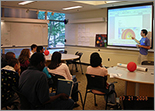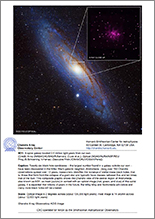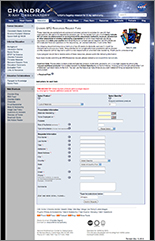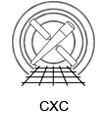
Our FY13 evaluation is in process. View an infographic of the preliminary 2013 evaluation on the Chandra web site here, one for our Facebook presence here, and one for our Twitter presence here.
For a summary of programs and impacts of the Chandra X-ray Observatory's Public Communications and Engagement, as presented to the 2014 NASA Senior Review (March, 2014), watch this powerpoint presentation.
Summary of selected results from earlier evaluations: The Chandra program has done summary surveys of specific product areas, longitudinal studies of usage and impact, and focused studies to determine needs, content, and perform formative and summative evaluation of specific products or activities.
Previous years evaluations have focused on the effectiveness of teacher PD workshops, on the impact on student education and career choices of the Astrophysics Summer Institute for high school students, on usage and effectiveness of the public web site, printed materials, and materials and activities intended for classroom use, on preferences for formats and platforms for particular kinds of materials, on preferred science topics, etc.
Our evaluation findings show that the Chandra Communications & Public Engagement program has been successful in meeting its goals of widely disseminating information about the Chandra science results, in providing engaging materials for public and classroom use, in providing relevant and effective PD training to educators, in offering programs and materials that stimulate student interest in and engagement with space science.
Evaluation results from Goodman Research Group (GRG) about the usefulness of the Chandra web site as a public resource show that 78% of survey participants find current press releases and related articles to be “useful or very useful”, and 71% use the Photo Album page “every or nearly every visit”. More than three-quarters of participants reported downloading and printing a current image. Further GRG studies show 92% of survey respondents agree that the Chandra site is “a valuable resource”, “a good source of new ideas”, and “contains comprehensive information about astronomy”; 84% use it to find images by category, date, constellation or sky map location, and to read background material on X-ray astronomy and on the Chandra mission; 61% read feature articles on nearly every visit.
Chandra evaluations include both impact and outcome studies. Some examples:
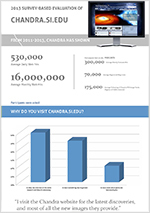 Chandra Site Impacts pdf |
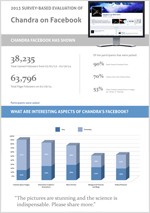 Chandra Facebook Impacts pdf |
 Chandra Twitter Impacts pdf |
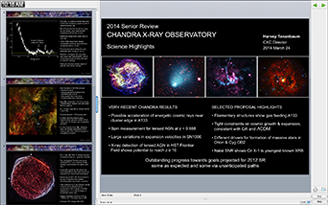 Senior Review 2014 Slides (pdf) |
1) In a longitudinal survey (6 years) about the Astrophysics Summer Institute (ASI) for high school students, participants were asked a series of questions about the impact of the program on their continued participation in STEM degrees and careers, and on their attitudes toward learning in general.
- 65% said that the program made them “somewhat” or “much more” inclined to pursue more education in STEM.
- 83% enrolled in or completing a degree program reported majoring or minoring in a STEM subject. Concentrations included astronomy, physics, information systems, computer engineering, bio-medical and biological sciences, microbiology, immunology and medical school.
- 68% rated the program as one of their top 3 educational experiences.
- An additional 7% rated it as their top educational experience.
2) Qualitative assessment of learning experience during the ASI was high, rated on a scale of 1-5 where 5 = learned a great deal (mean response) in the following areas:
- Astronomy 4.52
- Methods of data analysis 4.34
- Skills in interpreting scientific data 4.28
- Telescopes and satellites 4.12
- Experimental techniques in science 4.04
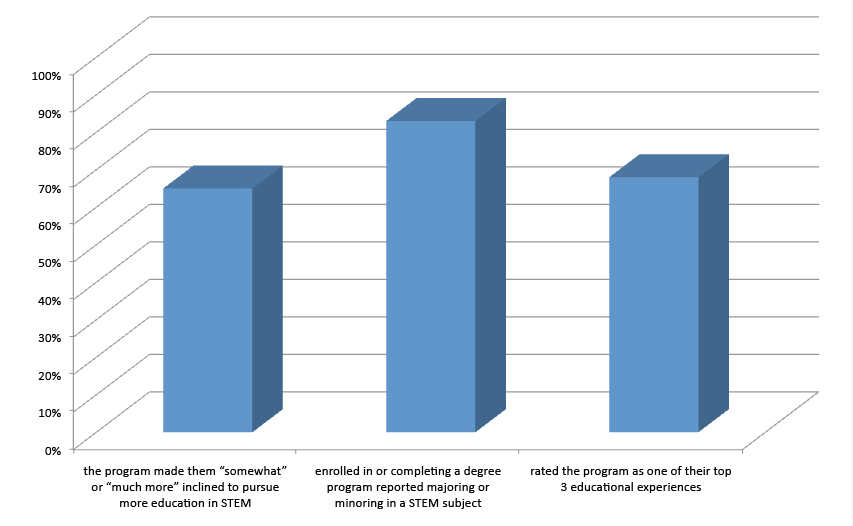
3) Professional Development Teacher workshops were surveyed for learning gains in various areas. For example, in the category of knowledge about space based observatories:
- Prior to the workshop, 52 % of participants said that they knew “nothing or little” about this category. Surveyed after the workshop, only 21 % responded that they still knew “little”.
- Prior to the workshop 48% responded that they knew “something to a lot” about this area. After the workshop, 81% reported knowing “something to a lot”.
- The largest reduction was in the “very little” category, from 40% to 18%. The largest gain was in the “quite a bit” category, from 10% to 30%.
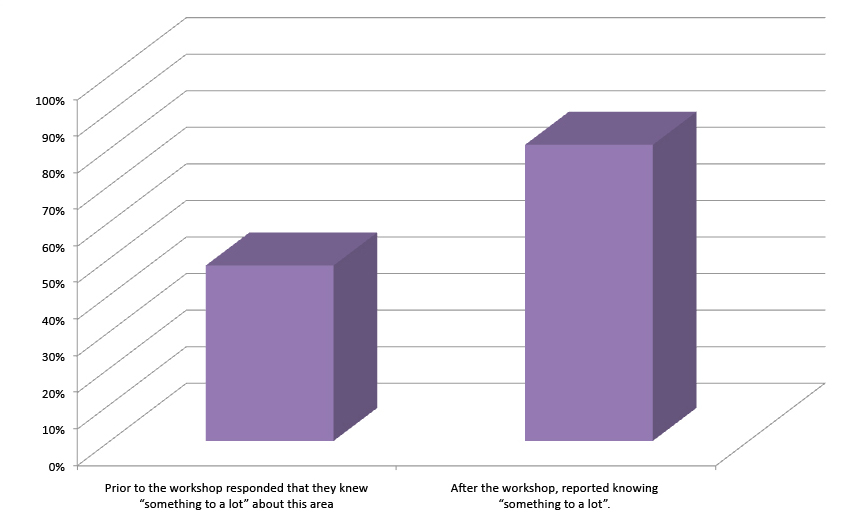
1) How effective are the Chandra program and products in fostering engagement with and awareness of space science research?
- 67% of a survey sample of 475 formal and informal educators rated the Chandra materials as “more interesting” and 58% as “more current” than other materials they had access to.
- Over 60% indicated that the large wall posters, lithographs, postcards and card sets are “extremely”or “quite” useful for engaging their audiences.
- 68% of professional development workshop attendees reported that they were very or extremely likely to visit the Chandra website and recommend it to other education colleagues as a resource.
- 73% reported that the workshop activities were very or extremely effective in engaging students.
- 82% of respondents had or planned to request additional materials.
2) What is the efficacy of each kind of material?
- 85% of respondents reported that the classroom activities presented in PD workshops were very or extremely effective in helping students learn the relevant scientific concepts.
- Products that scored “excellent” in achieving learning goals, relevance of content, and information provided about astronomy were the stellar evolution poster, two other poster sets, the stellar cycles card set, image postcards, and image bookmarks. No Chandra product was rated as mediocre or inferior.
- Large wall posters were rated the most useful by nearly 80% of all respondents. An over whelming consensus (72%) singled out the large wall poster about stellar evolution as the single most useful product for both formal and informal venues.
Comments from survey of participants in Astrophysics Summer Institute
- Being exposed to real scientific research at such a young age is incredible to me. It stands among my most valuable educational experiences.
- The summer institute was the first intensive exposure to “hands-on” scientific model building (and re-building) that I ever had. The experience definitely provided me with an advantage (at selecting hypotheses, designing experiments, and troubleshooting) when I started doing my own bench research in college.
- I have always had a deep passion for science, so this program did not serve as a way for me to become interested in science. However, this program truly helped me understand models, the scientific method, etc. and thus helped me to become a better science student even if it was not focused on the field (Biotechnology) I intend to pursue.
- It was much more challenging than any of my high school classes in the sciences. The teaching style focused more on the process of learning and understanding than the product of education, which I feel taught me more. I still remember the methods I used to solve certain problems.
- The institute was an extremely useful program. It served to better prepare me for my college endeavors. It also served to inspire me to reach for a career in the sciences.
- Reinvented my understanding of science. The program has given me the confidence to pursue a career in science.
- Prior to the program, I had the intention of pursuing an MD. However, after having been exposed to research, I am strongly considering pursuing a PhD in addition to the MD to allow me to conduct medical research.

